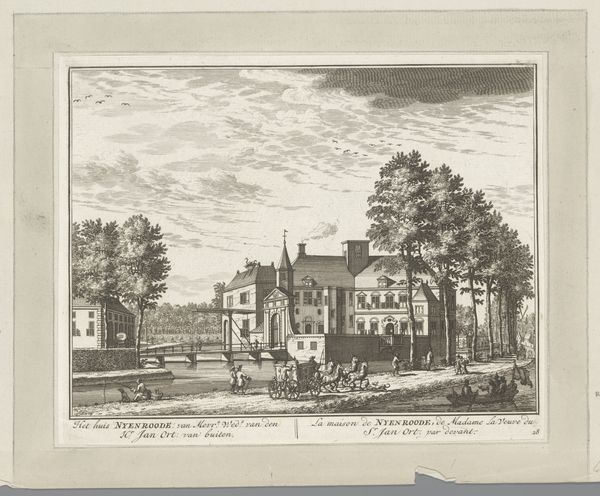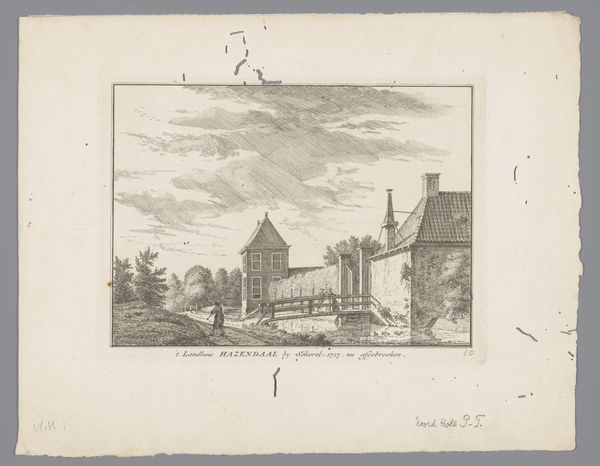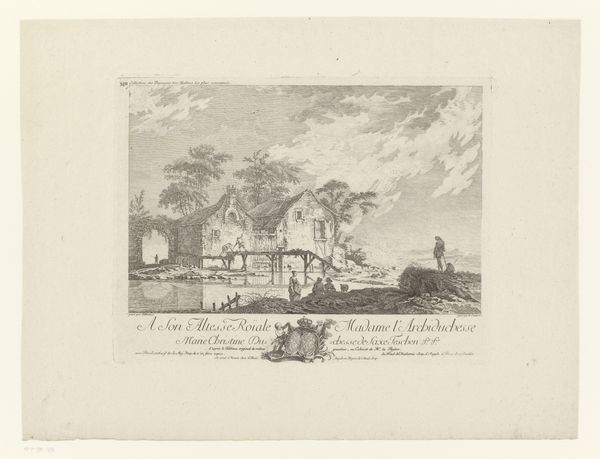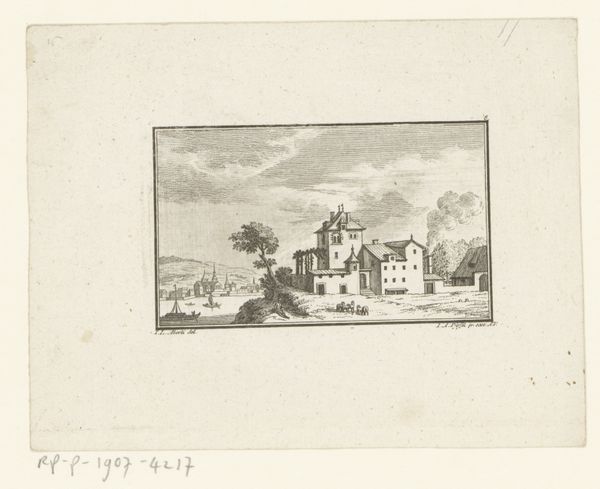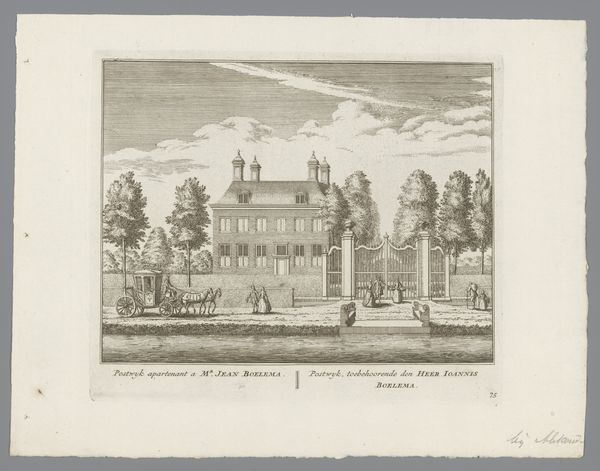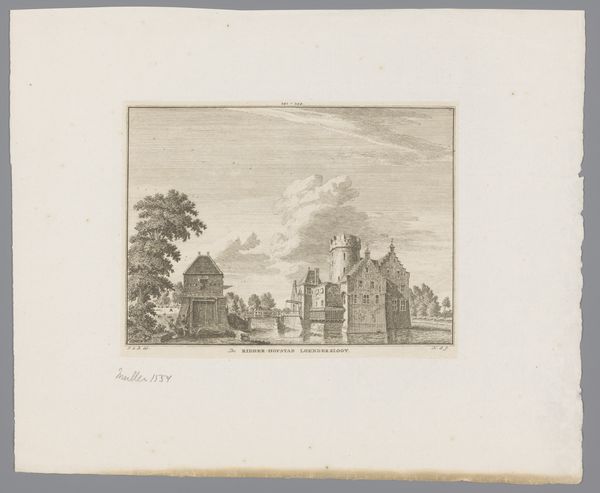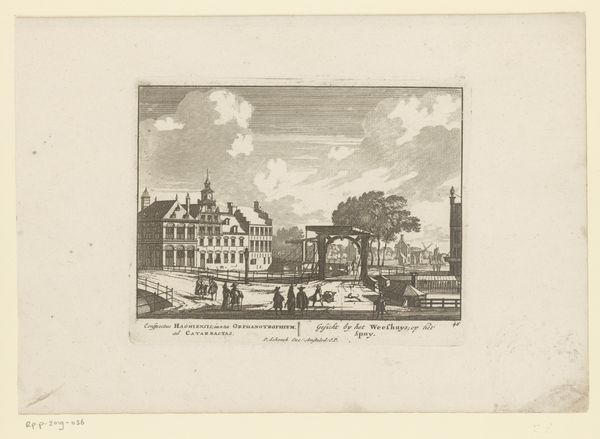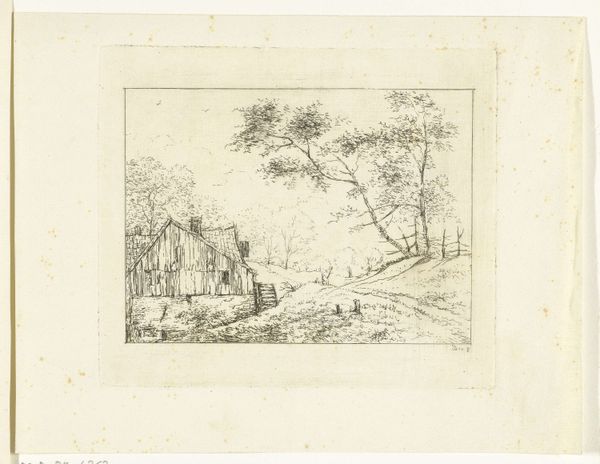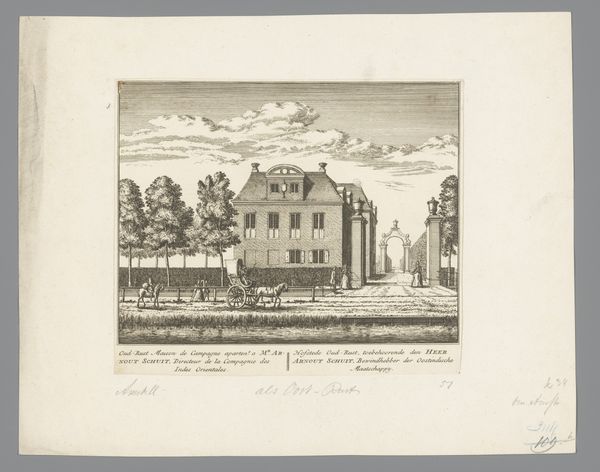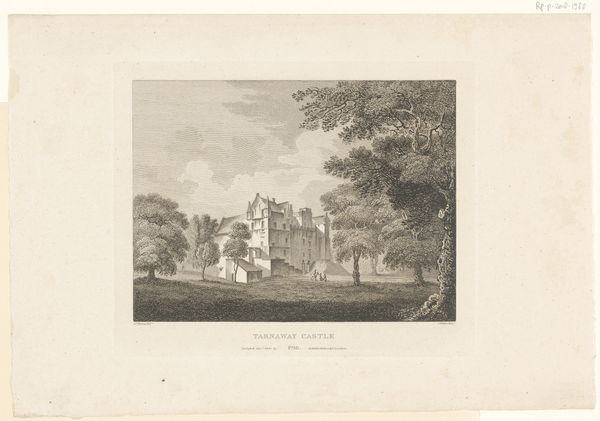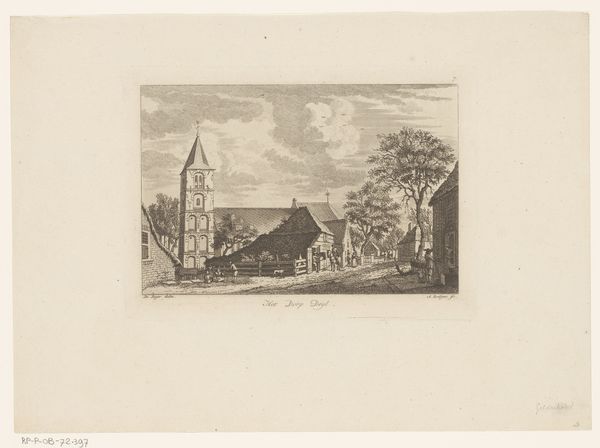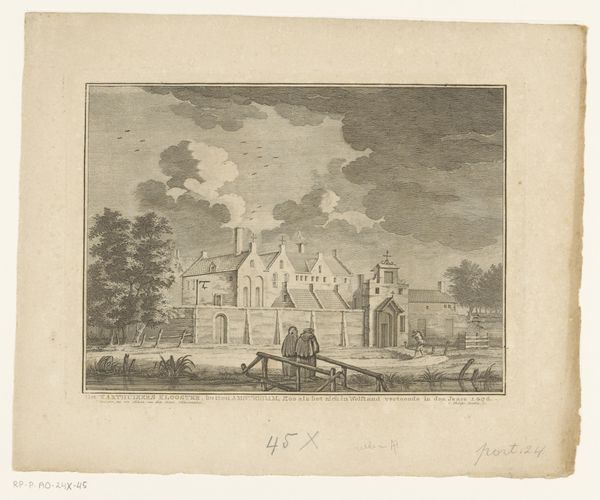
Dimensions: height 127 mm, width 83 mm
Copyright: Rijks Museum: Open Domain
Editor: So this is "Bruininkhuysen," an engraving from 1768 by Antoine Radigues. It depicts a, well, it looks like a rather grand estate, and immediately gives off this tranquil, almost lonely vibe. What do you make of it? Curator: Lonely, you say? Perhaps it is. I see a memory, a faded postcard from a time when such estates held a different kind of weight. Radigues captured the architecture with precision, didn't he? But there’s something more than just documenting a place. Consider the figures – small, almost incidental. Are they simply staff, or do they represent something else? Do they echo the relationship between people and property, and time, constantly reshaping it? What do *you* think they add to this serene scene? Editor: They definitely emphasize the scale, I think. They seem almost insignificant next to the buildings, highlighting the power of architecture. Maybe Radigues was playing with that idea, that tension between human life and lasting structures. Curator: Exactly! It’s as if the figures are merely passing through, while the estate remains, bearing witness to centuries of changing fortunes. Engravings like this were, in some ways, the social media of their time, spreading images of power and prestige. A visual record, capturing that tension for posterity, don't you think? Editor: I hadn't considered it like that, almost an early version of Instagram... That makes a lot of sense. I’ll definitely look at these kinds of engravings with a fresh perspective now. Thanks! Curator: My pleasure. Art speaks when we listen closely! Keep those questions coming!
Comments
No comments
Be the first to comment and join the conversation on the ultimate creative platform.
